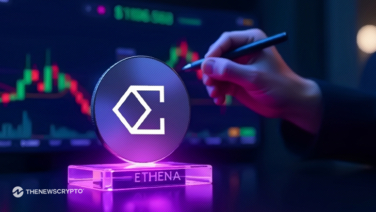- This unexpected policy pivot has rippled through international markets and triggered a chain reaction of retaliatory responses from global trade partners.
- Volatility has returned with a vengeance as Bitcoin has endured some of its largest single-day losses since the 2020 pandemic crash.
The year 2025 has seen a dramatic shift in global economic dynamics, marked by a resurgence of protectionist trade policies led by the United States. Within days of returning to office, President Trump reignited the tariff war, making good on campaign promises by swiftly imposing broad-based and country-specific import duties under emergency executive authority. This unexpected policy pivot has rippled through international markets and triggered a chain reaction of retaliatory responses from global trade partners as discussed in the latest Binance Research report.
Liberation Day and the New Tariff Order
April 2, now referred to as “Liberation Day” by the White House, served as the inflection point for what has become a sweeping trade war. That day, the U.S. introduced a new 10% baseline tariff on all imported goods, a sharp reversal from decades of trade liberalization. This blanket tariff took effect on April 5, raising the average U.S. tariff rate to levels unseen since the Great Depression era. Beyond the baseline levy, targeted duties were announced against specific countries. China, long a focal point of U.S. trade tensions, was hit with a combined 54% tariff rate after the addition of a new 34% surcharge. The European Union was assigned a 20% rate, while Japan and Vietnam faced 24% and 46% respectively. Automobile imports were taxed at 25%. Notably, Canada and Mexico had already been penalized in February with 20% tariffs.

Retaliation and Escalation Across Borders
These aggressive measures have reignited global trade tensions. Retaliatory actions followed almost immediately. Canada imposed a 25% blanket tariff on all U.S. imports after attempts to negotiate a delay failed. China responded in kind on April 4, imposing a 34% tariff on all American imports. Other countries are now preparing their own countermeasures, with the European Union signaling that it too will respond swiftly. Trade alliances that once appeared stable are now under severe strain, and analysts warn that this widespread escalation may result in a prolonged and volatile global trade war.
Ripple Effects on Markets and Crypto
With tariffs now impacting up to 60 countries, this latest wave of protectionism has sparked concerns about inflation, market volatility, and macroeconomic instability. The average U.S. tariff rate, previously hovering around 2.5% in 2024, has surged to approximately 18.8%, with some estimates placing it above 22%. This abrupt increase in import costs mirrors the tariff spike brought on by the infamous Smoot-Hawley Act of 1930, which had devastating effects on global trade during the Great Depression. What was once a largely liberalized trade landscape has suddenly returned to one of aggressive economic nationalism.
Financial markets have responded with clear signs of distress. Investor sentiment has shifted dramatically into risk-off mode, as seen in both traditional and digital asset markets. Global crypto capitalization has dropped by nearly 26% from its January highs, wiping out around $1 trillion in value. Bitcoin has fallen by 19.1%, while Ethereum has seen a steeper 40% drop. High-volatility crypto sectors such as memecoins and artificial intelligence tokens have plunged over 50%, demonstrating crypto’s vulnerability to macroeconomic shocks.
A Shift to Safety: Gold Soars While Risk Assets Suffer
Traditional equities have also suffered, with the S&P 500 falling by over 17%. Conversely, safe-haven assets like gold have benefited from the turbulence. Gold prices have surged to new all-time highs, rising by more than 10% as investors flee to security. A recent fund manager survey highlighted this shift in investor preference: while only 3% of respondents indicated they would invest in Bitcoin under current conditions, 58% favored gold as a hedge against ongoing trade instability.
The Volatility Comeback and Crypto’s Fragile Position
Volatility has returned with a vengeance. Bitcoin has endured some of its largest single-day losses since the 2020 pandemic crash. When the February announcement of tariffs on Canada and the EU caught markets off-guard, Bitcoin fell 15% in just a few days. Ethereum saw its one-month realized volatility jump past 100%, underscoring the heightened sensitivity of digital assets to unpredictable policy moves. Until tariff policies stabilize or markets fully price in the trade disruptions, these wild price swings are likely to continue.
The Inflation Problem: A Policy Dilemma Emerges
Beyond market movements, the macroeconomic implications of the tariff resurgence are substantial. The added cost of imports is now fueling fresh inflationary pressures at a time when the Federal Reserve was beginning to tame post-pandemic inflation. Market-based inflation indicators, like 1-year inflation swaps, have surged past 3%, while consumer expectations have climbed as high as 5%. This presents a serious policy dilemma: rising inflation paired with slowing economic growth signals the potential onset of stagflation.
Economists warn that a prolonged trade war could slash global output by up to $1.4 trillion. In the U.S. alone, real GDP per capita could decline by nearly 1% during the early phases of the trade conflict. Fitch Ratings has suggested that the tariff burden is now so heavy that traditional economic forecasting models are becoming unreliable. If the global economy spirals further into retaliatory protectionism, the possibility of a broad-based recession becomes more likely.
The Fed’s Tightrope: Growth vs Inflation
This economic environment is also influencing the outlook for U.S. monetary policy. The Federal Reserve, which had maintained a hawkish stance in its battle against inflation, now faces pressure to pivot. Fed Funds futures have begun pricing in as many as four rate cuts for 2025, a sharp reversal from previous expectations of just one. Fed Chair Jerome Powell recently acknowledged the challenge, stating that the size and scope of the tariffs are larger than anticipated and that their economic effects must be closely watched. The Fed now faces the difficult task of balancing inflation control with the need to support an increasingly fragile economy.
The uncertain policy landscape has further added to investor anxiety. Whether the Federal Reserve will be able to maintain inflation targets without exacerbating a slowdown is unclear. As the central bank remains data-dependent, it will be guided by whichever threat—rising inflation or weakening growth—appears more pressing in the months ahead. However, this ambiguity is itself a source of market volatility.
New Correlations: Crypto Moves with Stocks, Not Gold
The trade war has also altered the traditional correlations between asset classes. Bitcoin’s correlation with equities, particularly the S&P 500, has risen significantly. While the initial tariff announcements in January led to fragmented market reactions, by March, the correlation between Bitcoin and U.S. equities had climbed to 0.47, highlighting the shared risk sentiment. At the same time, Bitcoin’s correlation with gold has turned negative, dropping to –0.22, suggesting that crypto is behaving more like a risk asset than a store of value during times of economic stress.
These developments reflect a broader transformation in how markets view crypto assets. Macroeconomic forces such as trade policy, interest rate expectations, and inflation outlooks are increasingly dictating the behavior of digital currencies. As Bitcoin and its peers align more closely with traditional risk assets, their role in portfolio diversification may be shifting. Whether this new correlation structure holds in the long run remains to be seen, but it is clear that crypto is no longer immune to geopolitical and macroeconomic headwinds.
Conclusion: A New Era of Global Economic Uncertainty
In summary, the 2025 tariff resurgence has triggered a cascade of economic and market consequences. From surging inflation fears to collapsing crypto prices and an uncertain central bank outlook, the global economy is entering a new phase marked by heightened volatility and protectionist policy. As countries brace for further escalations, investors, policymakers, and businesses must adapt quickly to a world where trade tensions shape not just economic growth but the future of global financial markets.








